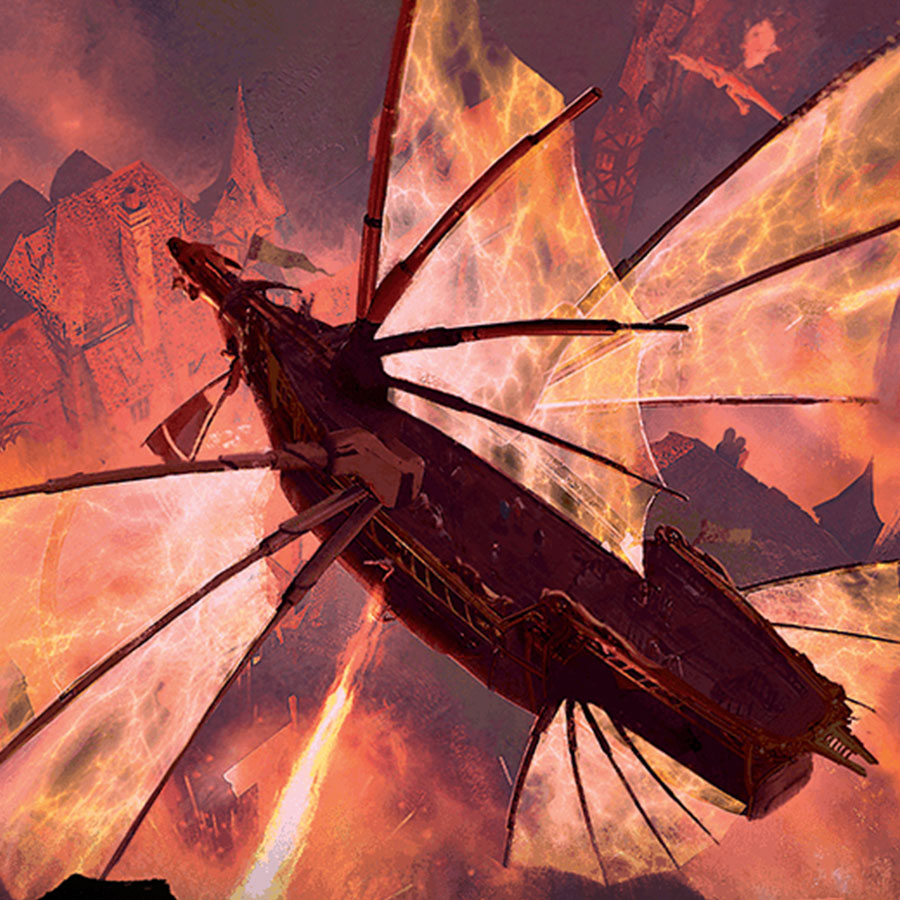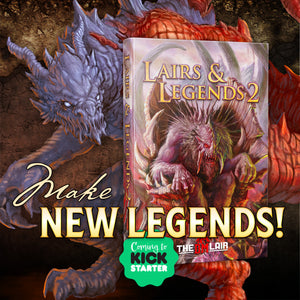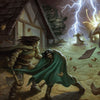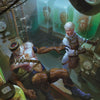How to Use Character Backstories in Dungeons & Dragons

By Luke Hart
Many dungeon masters struggle with how to use character backstories effectively. Some ignore them entirely, missing out on opportunities to engage their players. Others take random details and force them into the ongoing campaign, creating moments that feel contrived rather than immersive. The result? Players either feel like their backstory doesn’t matter or, worse, they see the strings being pulled behind the scenes, breaking their immersion. But there’s a better way to incorporate character backstories that enhances the game for both players and dungeon masters.
Rather than awkwardly cramming backstory elements into the main plot, dungeon masters can treat character backstories as a source of unique, personal adventures. These character-driven story arcs allow players to see their past come to life naturally while giving the entire group meaningful side quests that deepen the campaign’s narrative. In this article, we’ll break down why backstories matter, how to use them effectively, and how to get players invested in creating them in the first place.
By the way, if you need a quick adventure to run for your group when you're in a pinch, check out all the one-shots we have to choose from. Grab an adventure, read it in about 15 minutes, and you’re ready to run your game!
Watch or listen to this article by clicking the video below.
#1 Why the DM Should Use Character Backstories
Character backstories are one of the most valuable tools a dungeon master has for creating an engaging and immersive campaign. They provide a foundation for personal investment, turning the game from a generic fantasy adventure into a story that feels tailor-made for the players. When a dungeon master takes elements from a player’s backstory and brings them into the game, it adds layers of depth, making the world feel alive and reactive.
A long-lost sibling appearing, a sworn enemy resurfacing, or a forgotten debt coming due are all moments that make players feel like their characters truly exist in the world. More importantly, these moments make the game more enjoyable for everyone, because when players are invested in their characters, they naturally engage more with the story, the world, and the other players at the table.
Using backstories also empowers players by reinforcing the idea that their choices matter. When a personal connection from their past influences the main story, it gives them extra motivation to take action. Instead of reacting to a pre-written plot, players feel like they have a stake in what happens next. This level of agency makes the game feel less like the DM is pulling all the strings and more like a collaborative storytelling experience. For the dungeon master, this is incredibly rewarding as well—watching players light up when a part of their backstory comes to life is a reminder that D&D isn’t just about mechanics or combat, but about crafting memorable stories together.
#2 How to Use Character Backstories
One of the most common ways dungeon masters use character backstories is by integrating them directly into the main campaign’s story arc. The idea here is simple: if a campaign revolves around a major plotline—say, stopping a rising cult or recovering a lost artifact—the DM might try to weave elements of a player’s backstory into it. Maybe the cult was responsible for the rogue’s lost family, or the artifact is tied to the wizard’s mysterious mentor.
This can seem like a seamless way to connect the players to the overarching story and give them personal stakes in the adventure. It also feels like a clever way to reward players for putting effort into their backstories. However, while this approach may sound good in theory, in practice it often breaks immersion.
The biggest issue is that players can usually tell when their backstory is being shoehorned into the plot. If the villain who burned down the fighter’s village just happens to be the big bad of the campaign, it can feel artificial rather than organic. It’s like pulling back the curtain on the DM’s illusion of a living world—suddenly, it’s clear that the story was "rigged" to fit the backstory instead of evolving naturally.
This isn’t necessarily a dealbreaker, and if done well, it can be a compelling addition to the campaign. But it requires careful execution, and even then, it risks making the game feel scripted rather than dynamic. Instead of forcing backstory elements into the central plot, there’s often a better approach: treating them as side stories that enhance the campaign without completely dictating its direction.
A more effective way to incorporate character backstories into your game is by creating character story arcs—separate, self-contained adventures that tie directly to a character’s past. Instead of trying to weave backstory elements into the overarching campaign plot, these arcs allow each character to have their own personal journey while still involving the entire party.
This method keeps the main storyline intact while giving each player a chance to have the spotlight in a meaningful way. The key is to take a compelling thread from a character’s backstory and build an adventure around it—something that feels like a natural extension of the world rather than a forced coincidence.
For example, in one campaign, Krindar, a fighter with a tragic past, was being hunted by the revenants of his fallen brothers—former comrades who blamed him for their deaths. As the story unfolded, Krindar discovered that his long-thought-dead sister was still alive, leading the party on a quest to uncover the truth behind her disappearance.
In another case, Cassim, a rogue estranged from his wealthy family, was suddenly tracked down by his sister. His father’s health was failing, and their once-prosperous family business was in danger. The party helped him navigate the intrigue of his family’s affairs, giving Cassim a chance to make amends with his father before it was too late.
These types of personal stories are easier to implement than weaving backstories into the main arc and can be just as—if not more—impactful for the players. If you want to learn more about integrating personal story arcs, check out my Campaign Creation Part 1 and 2 videos, where I break down this approach in more detail.
#3 How to Implement Character Story Arcs
Character story arcs can be integrated into both homebrew campaigns and published modules, but the approach differs slightly for each.
In a homebrew campaign, you have full control over the pacing and structure, making it easy to alternate between the main campaign arc and individual character arcs. This ensures that the overarching story continues progressing while still giving each character time in the spotlight. For instance, you might spend a few sessions focusing on the party’s primary quest, then pivot to a personal story arc for one of the characters before returning to the main storyline. This ebb and flow keeps the game feeling dynamic and personal.
In contrast, incorporating character arcs into published modules requires a bit more finesse. While modules often follow a structured narrative, there are still opportunities to weave in personal storylines. One successful example was my Youngling Group, where a player’s backstory about a secret pirate past led to a detour that involved a pirate ship, rival captains, and a hidden treasure. Before making changes, though, talk to your players—some may want to experience the module as written, while others will appreciate personal arcs woven in. Usually, a mix works best.
The frequency of character arcs should be tailored to your group’s interests. Some DMs prefer a loose structure, alternating between a couple of main campaign adventures and then a character arc. For instance, in my Ancient Dragon campaign, we veered so deeply into character arcs that the main story almost took a backseat until we reached the Domain of Dread. While this worked for that group, it might not suit every table. The key is flexibility—use character arcs when they enhance the experience rather than forcing them into the game.
A big question is how to incorporate player input while keeping surprises intact. The answer is simple: their backstory is their input. You don’t need to ask them what they want to happen—you take what they’ve already given you and build a compelling adventure around it. Everything beyond what they’ve written remains a mystery for them to uncover. This keeps their arc engaging without spoiling the experience.
But what happens when you run out of backstory hooks, and the players still want to continue with their current characters? The best solution is to encourage them to expand on their backstories. Maybe a long-lost friend resurfaces, a forgotten enemy returns, or the character has new personal goals shaped by their experiences in the campaign. Characters evolve over time, and so should their stories. By letting players add new elements to their backstory as the campaign progresses, you keep their journey compelling and ensure there’s always more story to explore.
#4 How to Get Players to Create Backstories
Getting players to create meaningful backstories can be a challenge, especially for those who aren’t naturally inclined toward character development. Many players, particularly those new to D&D, may feel overwhelmed when asked to come up with a history for their character. They might not know where to start, what details matter, or how much is too much. The trick to overcoming this is making the process easy by giving them a structured framework. Instead of asking for a long narrative, break it down into simple, focused questions that guide them in developing a character with motivations, conflicts, and connections to the world.
To help with this, I use nine key questions that not only establish a backstory but also provide hooks for future character arcs. These questions focus on things like the character’s origins, key relationships, personal ambitions, and unresolved conflicts—things that naturally lend themselves to storytelling.
I won’t go over all nine questions here, but if you want a straightforward way to help your players create strong, game-relevant backstories, you can grab my RPG Backstory Template for free on the DM Lair store. It’s a great tool to streamline backstory creation while giving DMs plenty of material to integrate into their campaigns. Plus, while you're there, you can also check out other dungeon master resources like 5e adventures, digital maps, and back issues of Lair Magazine—all designed to help you run engaging, low-prep games.
Easy-to-Prep One-Shot Adventures
Whether you're too busy to prep an adventure and game night is fast approaching or you'd just rather use a professional pre-made adventure for your group, our 5e and PF2e one-shot adventures have you covered.
- Dozens of adventures, all levels of play
- Lightning fast to prep
- Read-a-loud text, NPCs, area descriptions, roleplaying notes, encounter notes
- Digital maps (GM and player versions, gridded and un-gridded)
- Everything you need to play!
Gone are the days of just winging it and hoping for the best. Check out everything our one-shot adventures have to offer today!
-
Posted in
Game Master How-To Articles







